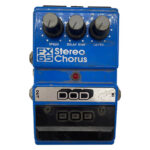For enthusiasts of rhythm action games, the mid-2010s marked an exciting resurgence. Even as the broader gaming community’s fervor for plastic instruments waned, dedicated fans eagerly anticipated each new Guitar Hero and Rock Band release. The simultaneous revival of both franchises in 2015 was a significant event, made even more compelling by the distinct approaches each title took.
However, for the average gamer, choosing between Guitar Hero Live and Rock Band 4 likely came down to selecting just one. The crucial question then became: which game offered the superior experience?
Having invested in both titles upon their release and dedicated considerable time to each, I aim to provide an unbiased and detailed comparison to guide your decision. Let’s dive into the rock-off.
Backwards Compatibility: Can You Use Your Old Plastic Guitars?
While not a primary concern for newcomers, many gamers possess collections of plastic guitars from previous console generations. The ability to utilize existing equipment is undoubtedly a welcome advantage.
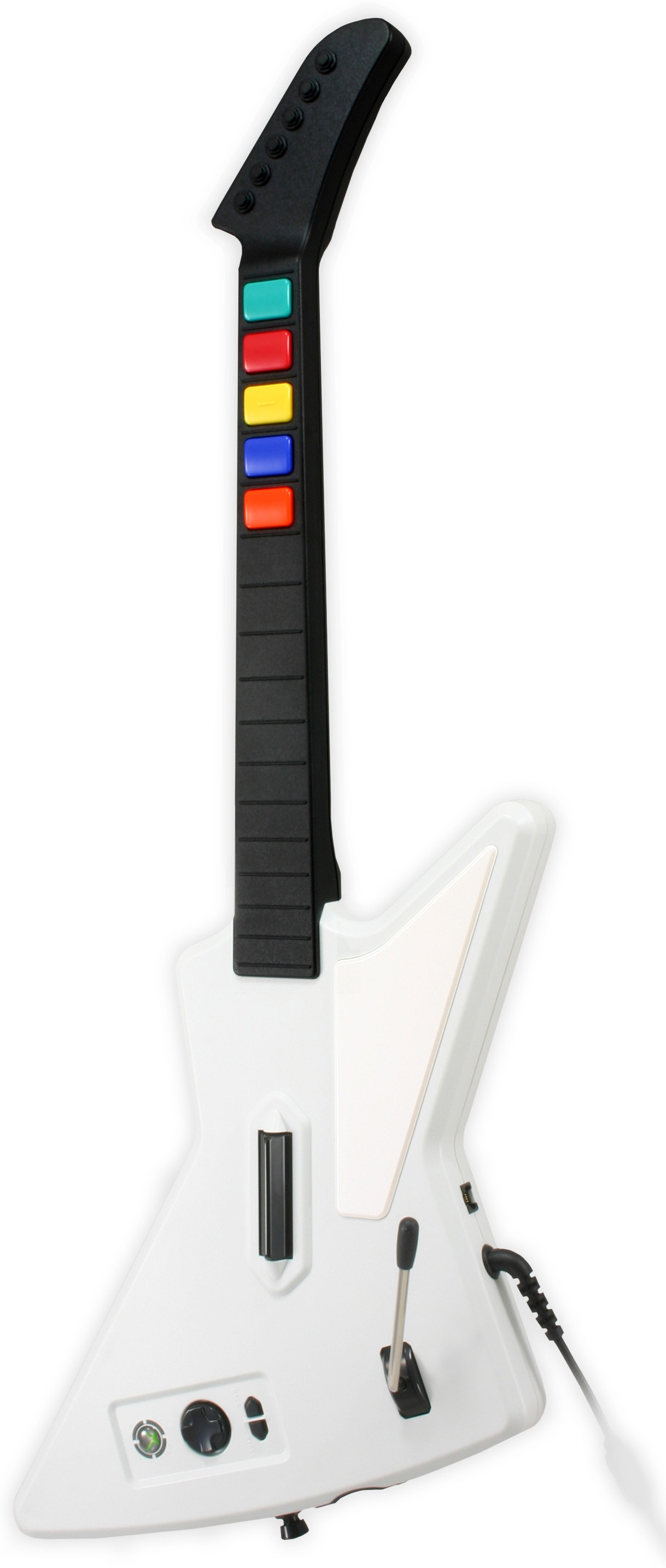 Rest in peace, plastic guitar heroes
Rest in peace, plastic guitar heroes
Rock Band 4 proudly champions backwards compatibility, largely delivering on its promise to support older Rock Band and Guitar Hero peripherals. My wireless Guitar Hero 3 Xbox 360 guitar seamlessly connected to the Xbox One version of Rock Band 4.
However, the compatibility isn’t flawless. Due to Microsoft’s device authentication protocols, wired controllers are incompatible. Regrettably, this meant retiring my cherished Guitar Hero II Xplorer, my preferred guitar controller for all Xbox 360 rhythm games.
Despite this specific limitation, the majority of wireless last-generation controllers should function smoothly with Rock Band 4.
Conversely, Guitar Hero Live adopts a completely different stance on compatibility. Its redesigned button configuration, which we’ll explore further, renders the classic five-button system obsolete. Consequently, none of your legacy controllers are compatible with Guitar Hero Live.
Winner: Rock Band 4
Guitar Gameplay: Classic vs. Revolution
While Rock Band expanded the rhythm game experience to include drums, vocals, and keyboards, guitar remains the quintessential instrument for many fans.
Rock Band 4 retains the familiar five-color lane system. Veterans of previous Rock Band or Guitar Hero titles will instantly feel at home.
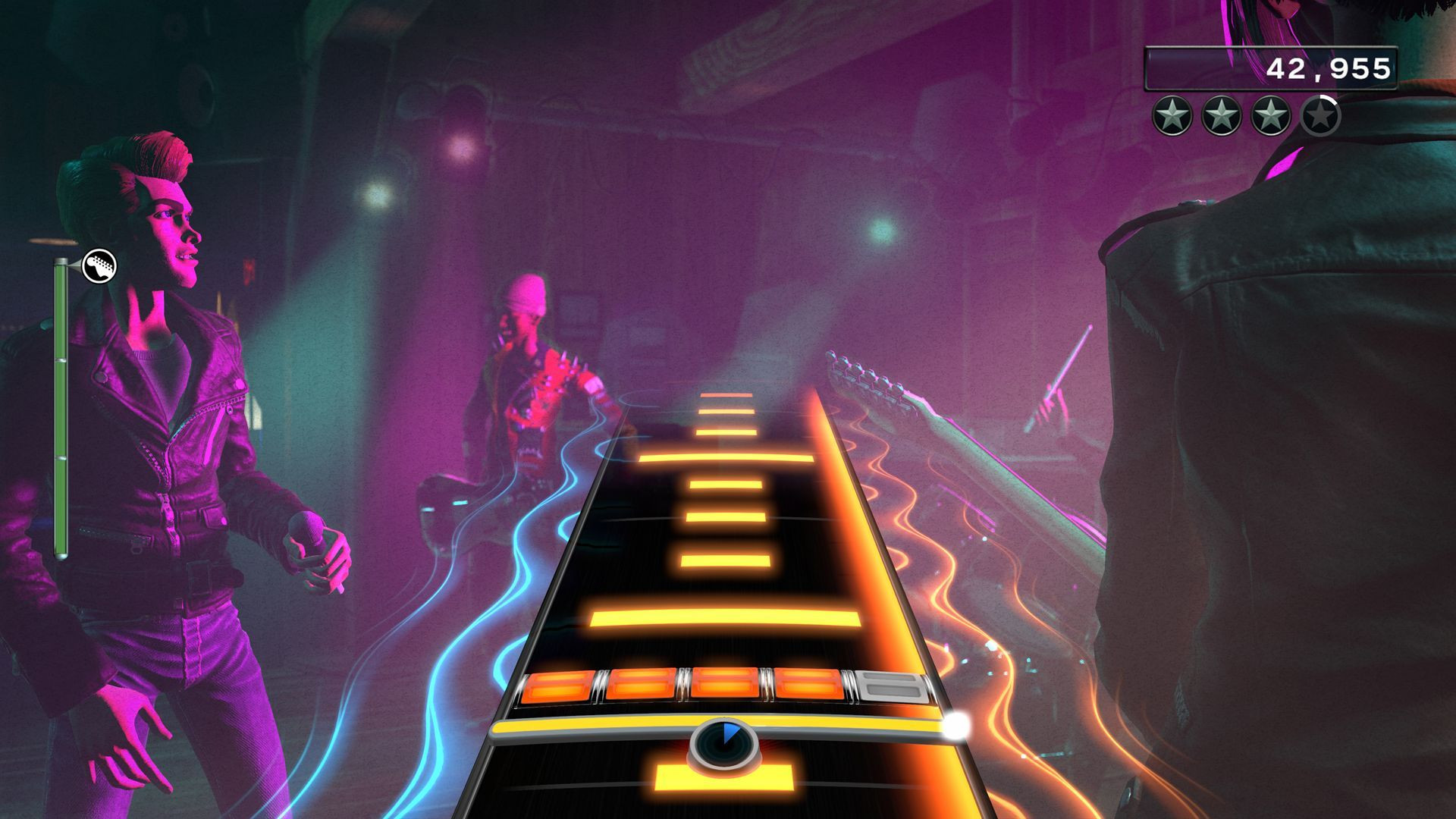 Rock Band 4 Guitar Gameplay
Rock Band 4 Guitar Gameplay
The core gameplay remains largely unchanged, with the addition of Freestyle Guitar Solos. These sections allow players to improvise, and the game intelligently weaves your notes into a coherent solo.
These freestyle solos seem inspired by similar mechanics in Harmonix’s Fantasia: Music Evolved. Personally, I find them somewhat disruptive, as the generated solos often sound slightly disjointed. Fortunately, they can be disabled. Rock Band 4 prioritizes evolution over radical change in its guitar gameplay.
In contrast, Guitar Hero Live embraces revolution. It abandons the five-button system entirely, introducing a new guitar controller with two rows of three buttons on the fretboard.
This redesign offers a distinct feel, arguably more akin to playing a real guitar. On higher difficulty settings, you’ll execute complex chords spanning both rows, and mastering these intricate fingerings provides a genuine sense of accomplishment.
This bold redesign was a gamble, but developer Freestyle Games, renowned for the innovative DJ Hero, had a proven track record of crafting exceptional peripherals.
After an initial adjustment period, Guitar Hero Live‘s new guitar system genuinely enhances the core gameplay, surpassing the long-standing five-button standard. In terms of pure guitar playing satisfaction, Guitar Hero Live takes the round.
Winner: Guitar Hero Live
Beyond Guitar: Instruments and Band Experience
This category presents a stark contrast, as only one game actively participates. The titles themselves offer a clear indication.
Rock Band 4 remains centered on the band dynamic. Drums, bass guitar, and vocals are integral components, and, as mentioned, most wireless legacy controllers (excluding wired) are compatible.
However, Rock Band 4 controversially omits keyboard support, sidelining an instrument that held considerable promise within the series.
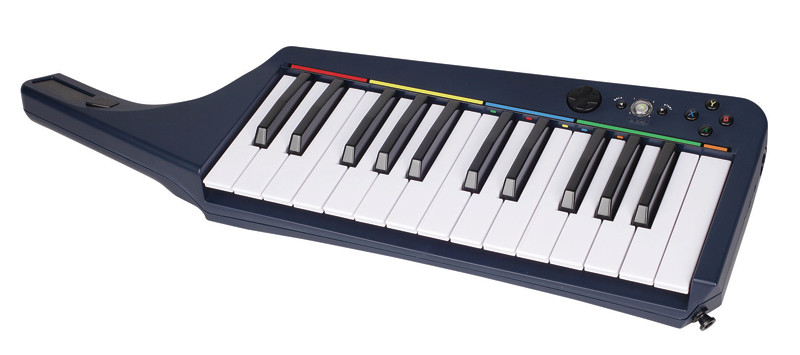 Rock Band 3 Keyboard
Rock Band 3 Keyboard
Guitar Hero Live, conversely, narrows its focus exclusively to the lead guitar experience. Drumming is entirely absent, and even bass guitar is not playable.
Vocal support is present, via a compatible microphone or a Guitar Hero Live companion app for iOS. However, the core emphasis is unequivocally on mastering the guitar, with other instruments relegated to the sidelines.
Winner: Rock Band 4
Visual Design: Graphics and Immersion
Visual preference is subjective, so consider this section accordingly.
Rock Band 4 maintains a visual style consistent with its predecessors, offering incremental graphical enhancements rather than a significant overhaul.
The aesthetic remains distinctly Rock Band, with the familiar process of band creation and stylized polygonal characters.
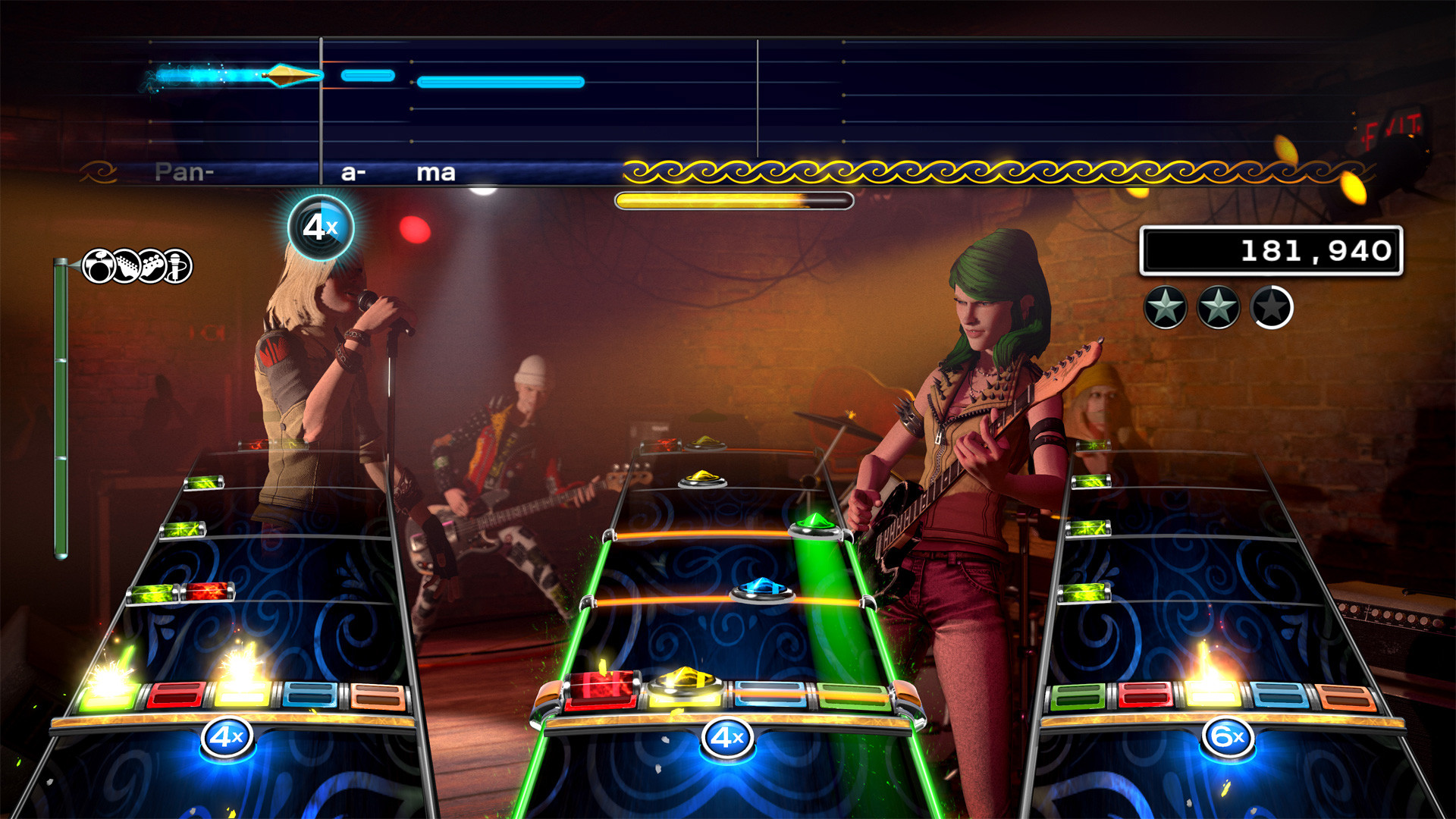 Rock Band 4 Visuals
Rock Band 4 Visuals
This design approach is partly dictated by the need to accommodate a vast library of downloadable content seamlessly. Existing DLC integrates smoothly, with character animations and lip-syncing effectively adapting to diverse musical styles.
Guitar Hero Live adopts a radically different visual approach, centered around full-motion video. This design choice yields mixed results across the game’s two primary modes.
The Guitar Hero TV (GHTV) mode, a streaming music channel concept, benefits significantly from this approach. Playing along to official music videos provides a compelling way to discover new artists, a key element of the rhythm game genre’s appeal.
However, the GH Live mode, featuring first-person live concert performances, is more divisive. While technically proficient, the execution falls short of revolutionary. It essentially alternates between “good” and “bad” performance videos based on player accuracy, with somewhat jarring transitions.
Furthermore, the live performance visuals are, to many, jarringly artificial. The hyper-idealized band members and audiences, while aiming for immersion, can feel contrived and detract from the experience.
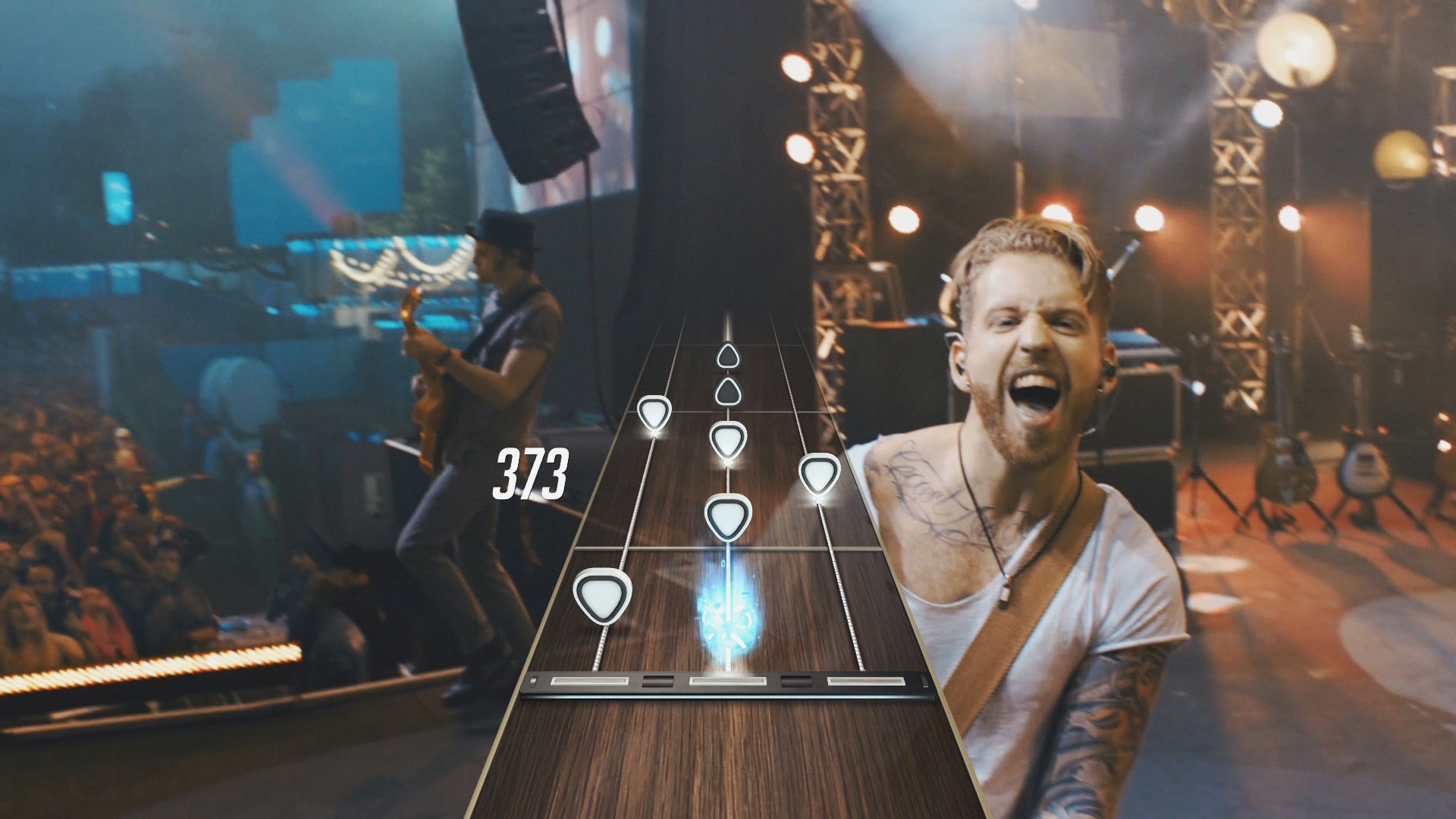 Guitar Hero Live FMV
Guitar Hero Live FMV
While GHTV’s music video integration is a strong positive, the GH Live mode’s execution and aesthetic shortcomings ultimately detract from the overall visual experience. Guitar Hero Live takes a bold risk, but its visual design proves to be a mixed bag.
Winner: Guitar Hero Live
On-Disc and Free Content: What Do You Get Out of the Box?
For players averse to downloadable content, the amount of content available upon initial purchase is crucial.
Rock Band 4 includes 65 on-disc songs, spanning from classic tracks of the 1960s to contemporary hits.
Expanding this library without additional purchases is limited to occasional free songs in the online catalog, which are infrequent. Even importing tracks from Rock Band 3 incurs a cost.
Guitar Hero Live offers 42 songs within its first-person concert mode, ranging from classic rock to more recent tracks.
However, the GHTV mode significantly expands the content offering. At launch, it featured over 200 streaming music videos playable at no extra cost. This library has since grown to include hundreds more songs, providing a constant stream of new, freely accessible content.
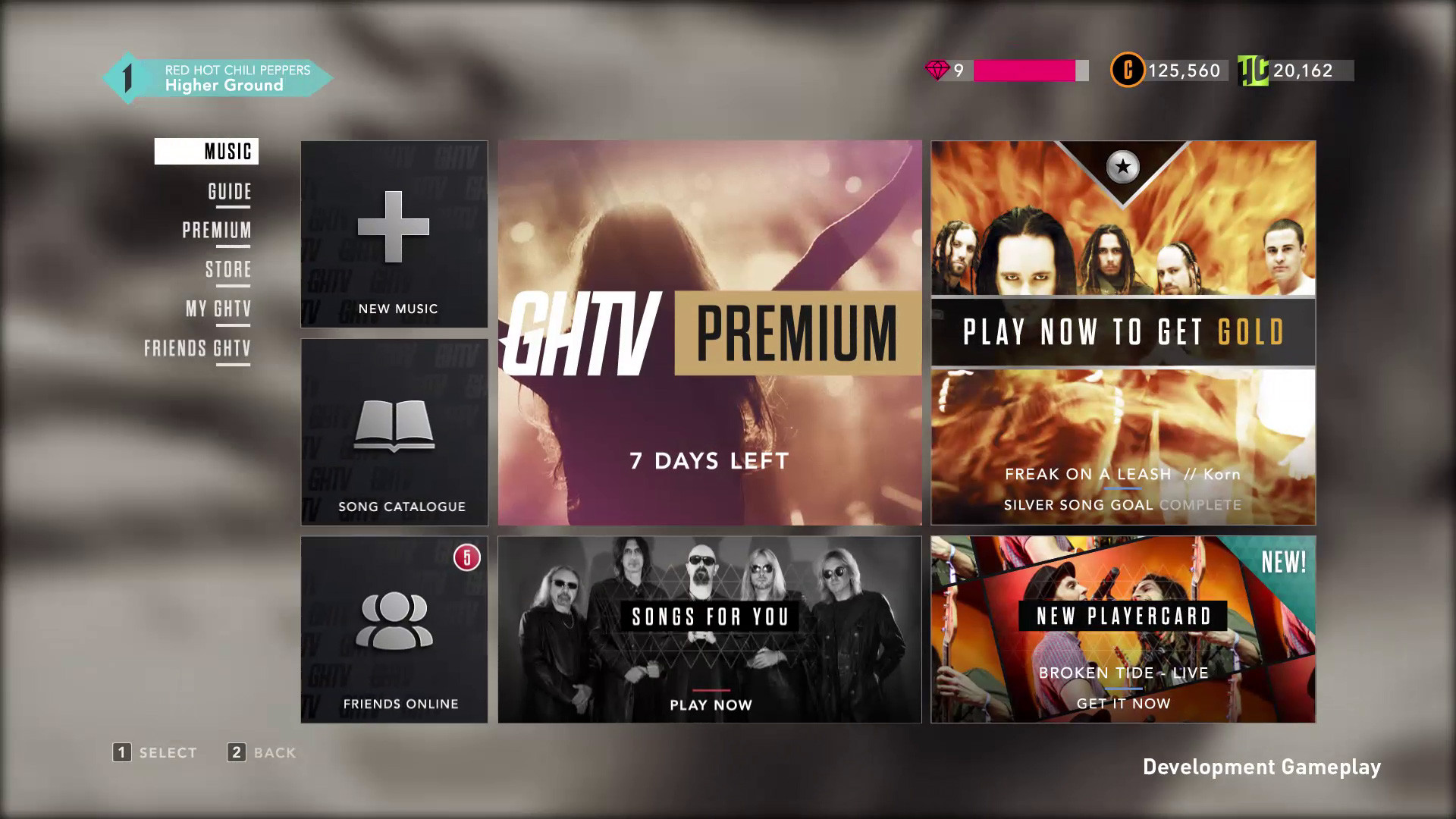 Guitar Hero Live GHTV Mode
Guitar Hero Live GHTV Mode
While GHTV’s streaming nature means song selection is not always on-demand, players can acquire play tokens to play specific songs at any time. These tokens can be purchased with real currency or earned through in-game play.
Given the extensive and ever-expanding library of free content within GHTV, Guitar Hero Live offers a more substantial content package out of the box.
Winner: Guitar Hero Live
Downloadable Content (DLC): Building Your Music Library
For players willing to invest in downloadable content to expand their song libraries, the landscape shifts.
Guitar Hero Live becomes less appealing in this context. While GHTV boasts a large library, players never truly own these songs. On-demand play requires tokens, creating a recurring cost for accessing specific tracks repeatedly.
Furthermore, the full-motion video production of the GH Live mode, with its bespoke videos and actors, makes adding DLC songs to this mode prohibitively expensive. Consequently, the 42 on-disc songs represent the entirety of the GH Live DLC offering.
Rock Band 4 presents a contrasting approach. Its engine is designed for seamless DLC integration, and it has done so extensively.
A vast majority of Rock Band 3‘s DLC catalog has been ported to Rock Band 4, offering a library of well over 1500 songs available for purchase.
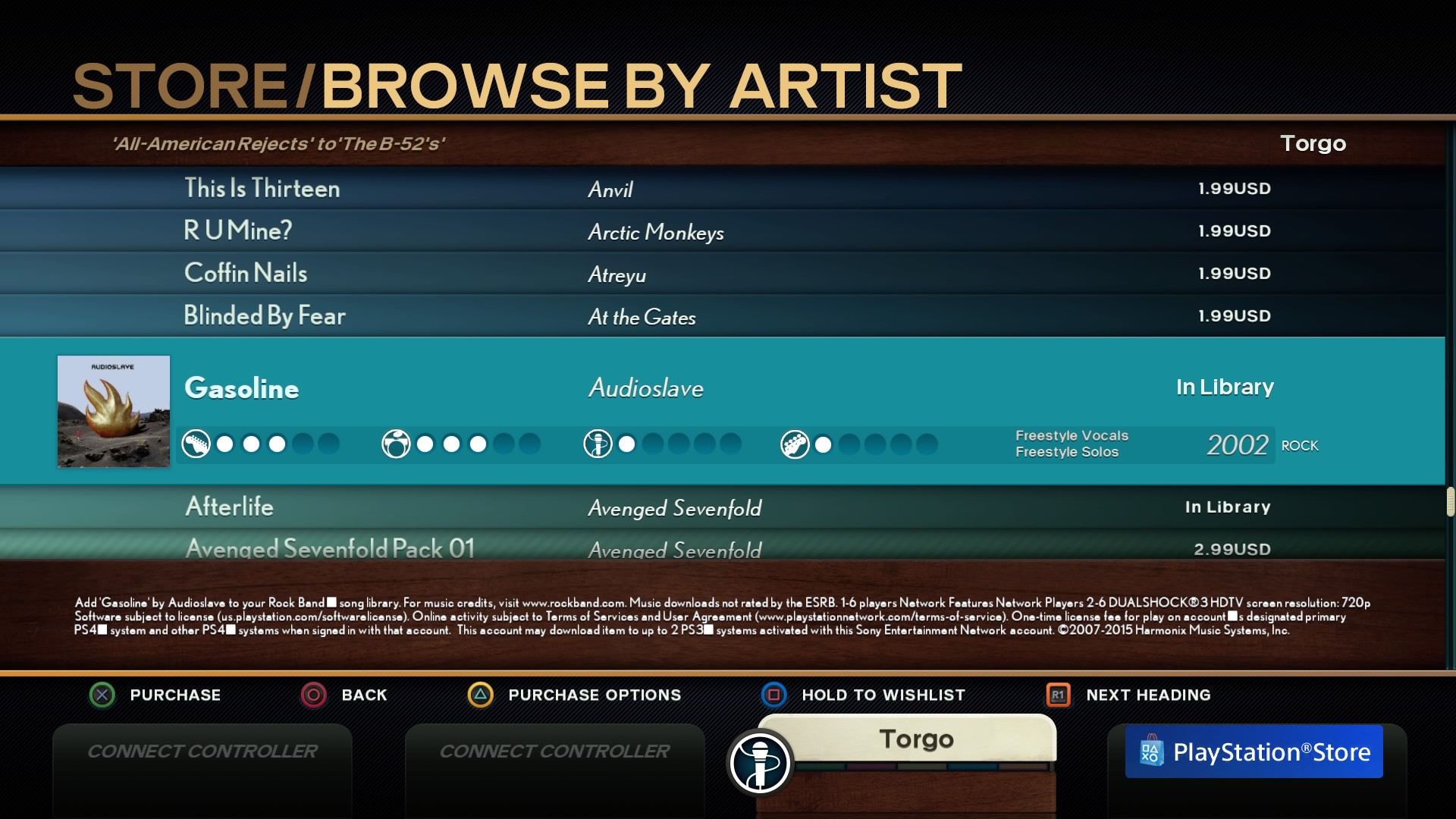 Rock Band 4 DLC
Rock Band 4 DLC
Crucially, purchased songs in Rock Band 4 are permanently owned and playable indefinitely. For players committed to building a substantial and personally curated music library, Rock Band 4 is the superior choice.
Winner: Rock Band 4
Single-Player Experience: Solo Gamer Focus
Rhythm games offer distinct experiences for solo and multiplayer gamers. How do these titles cater to the single player?
Guitar Hero Live, with its lead guitar focus, first-person perspective, and streamlined instrument selection, is clearly designed with single-player engagement in mind.
 Guitar Hero Live Single Player
Guitar Hero Live Single Player
The GHTV mode incorporates progression mechanics, rewarding players with experience points, level-ups, and unlockable customization items. Each song features specific challenges, adding replayability for solo players.
Rock Band 4 offers a less robust single-player experience. Its Career mode is comparatively brief, and beyond that, the primary solo options are replaying the career or playing individual songs in Quick Play mode.
For solo gamers seeking a sense of progression and sustained engagement, Guitar Hero Live offers a more compelling single-player experience.
Winner: Guitar Hero Live
Local Multiplayer: Playing with Friends
For many, the plastic instrument genre truly shines in local multiplayer settings.
In this regard, Guitar Hero Live falters significantly. Its multiplayer functionality is limited, recognizing only a second guitar in GHTV mode, and even then, both players play the same instrument part.
This results in a competitive, rather than cooperative, experience. Given the likely disparity in skill levels among local players, this competitive mode lacks broad appeal.
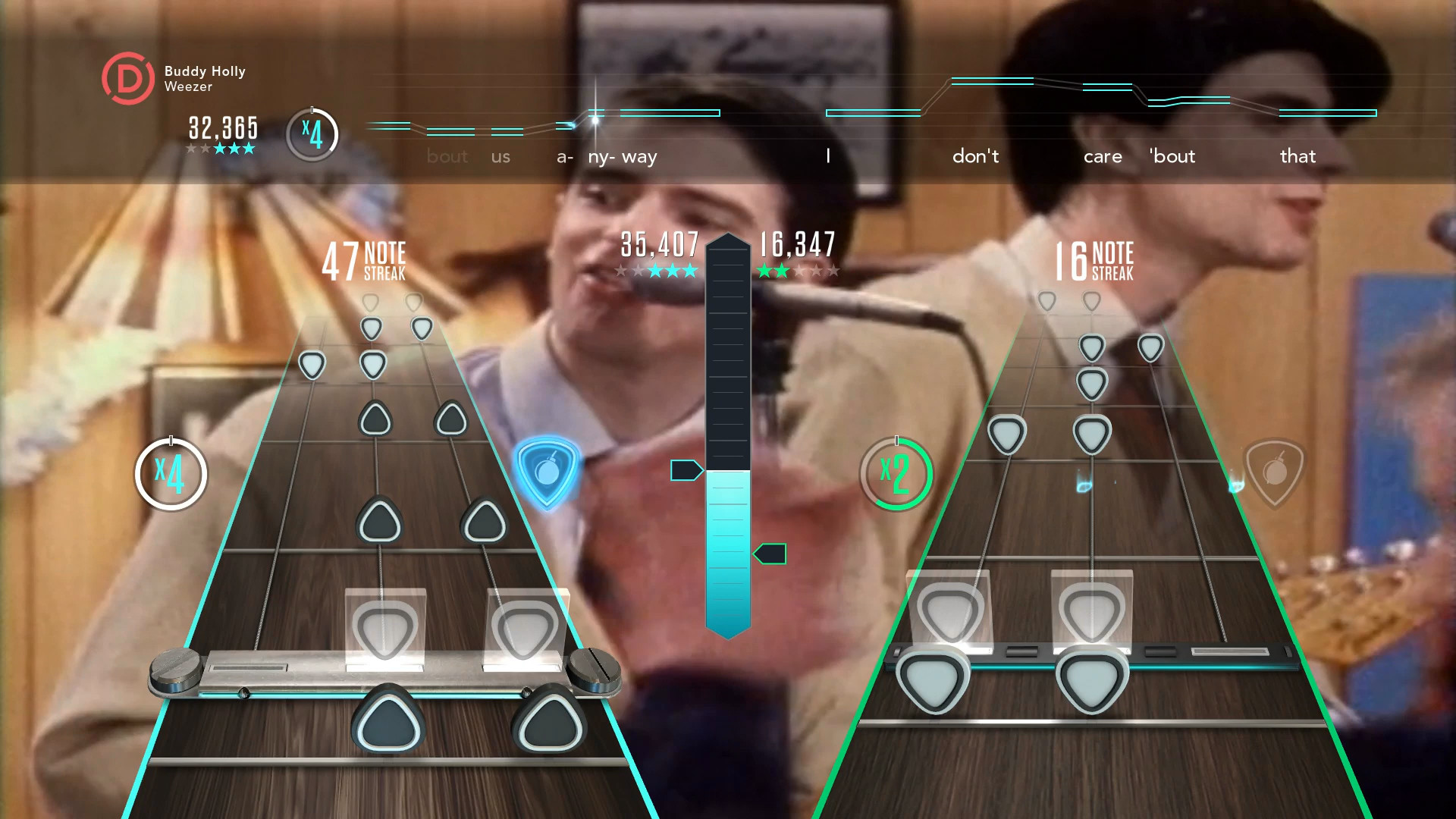 Guitar Hero Live Multiplayer Fail
Guitar Hero Live Multiplayer Fail
As previously noted, Guitar Hero Live prioritizes single-player. Rock Band 4, however, is explicitly designed as a multiplayer-centric game.
While Rock Band 4 doesn’t reinvent local multiplayer, it retains the core band experience that defined the genre’s previous peak. The thrill of four players performing together, achieving high multipliers, remains unmatched.
Rock Band‘s multiplayer was a genre benchmark, and Rock Band 4 wisely preserves this winning formula. For regular local multiplayer sessions, Rock Band 4 is the clear frontrunner.
Winner: Rock Band 4
Ongoing Updates and Support: Long-Term Value
Both Harmonix and Activision have positioned Rock Band 4 and Guitar Hero Live as evolving platforms, promising ongoing updates and support.
Within their initial months, both games have demonstrated this commitment. Rock Band 4 received updates introducing social score challenges, character customization options, and the challenging Brutal Mode.
Guitar Hero Live has consistently expanded its GHTV song library and added customization elements. It also introduced an online multiplayer mode, pairing players of similar skill levels for competitive GHTV sessions.
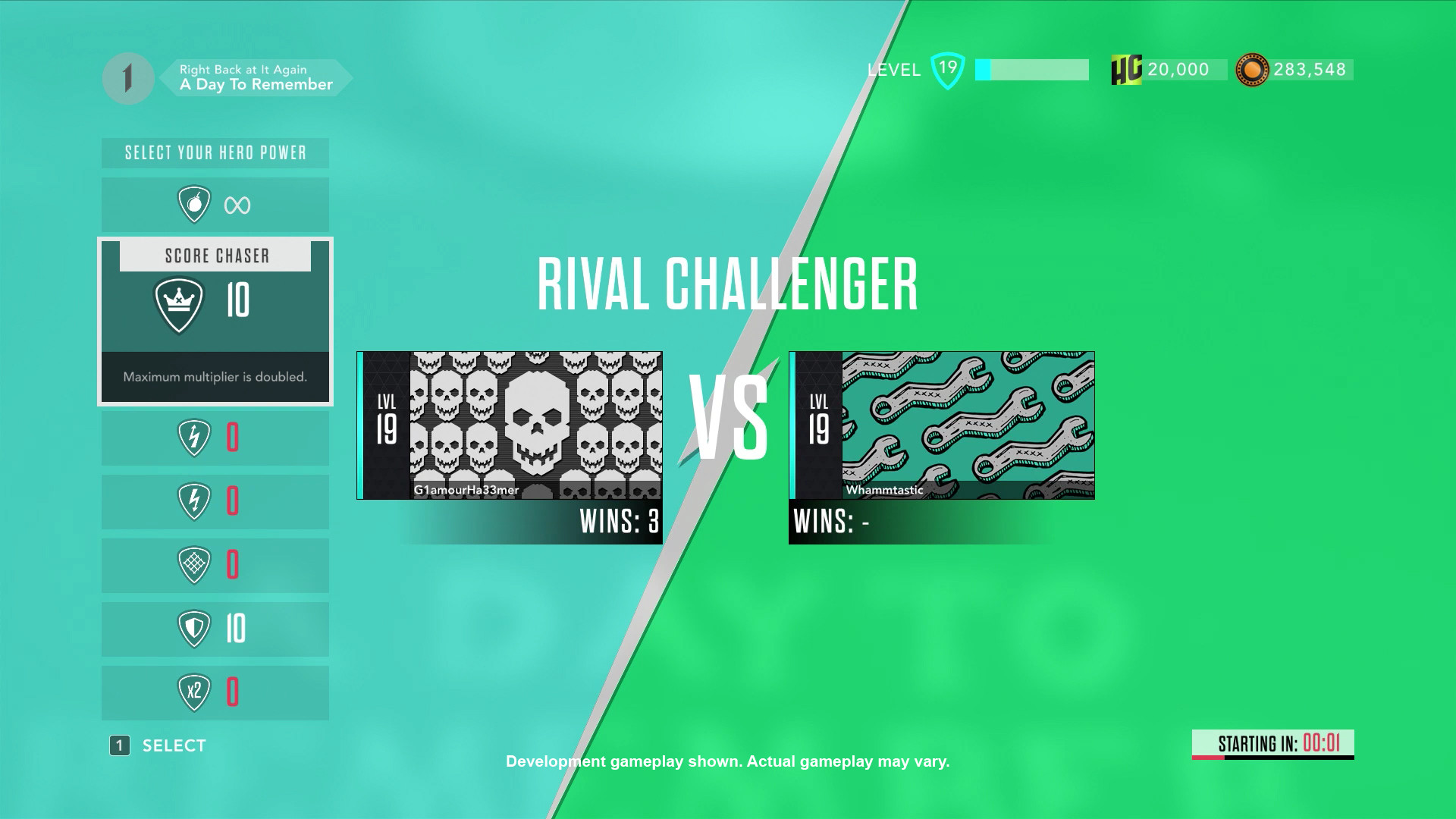 Guitar Hero Live Rivals Mode
Guitar Hero Live Rivals Mode
Both games demonstrate a dedication to ongoing support, encompassing new content, customization, and gameplay features. Players can anticipate continued evolution and improvement for both titles.
Winner: Draw
The Verdict: Which Guitar Game Should You Choose?
After this extensive comparison, the ultimate recommendation depends on your gaming preferences.
If you primarily play solo and anticipate limited multiplayer sessions, Guitar Hero Live emerges as the stronger choice.
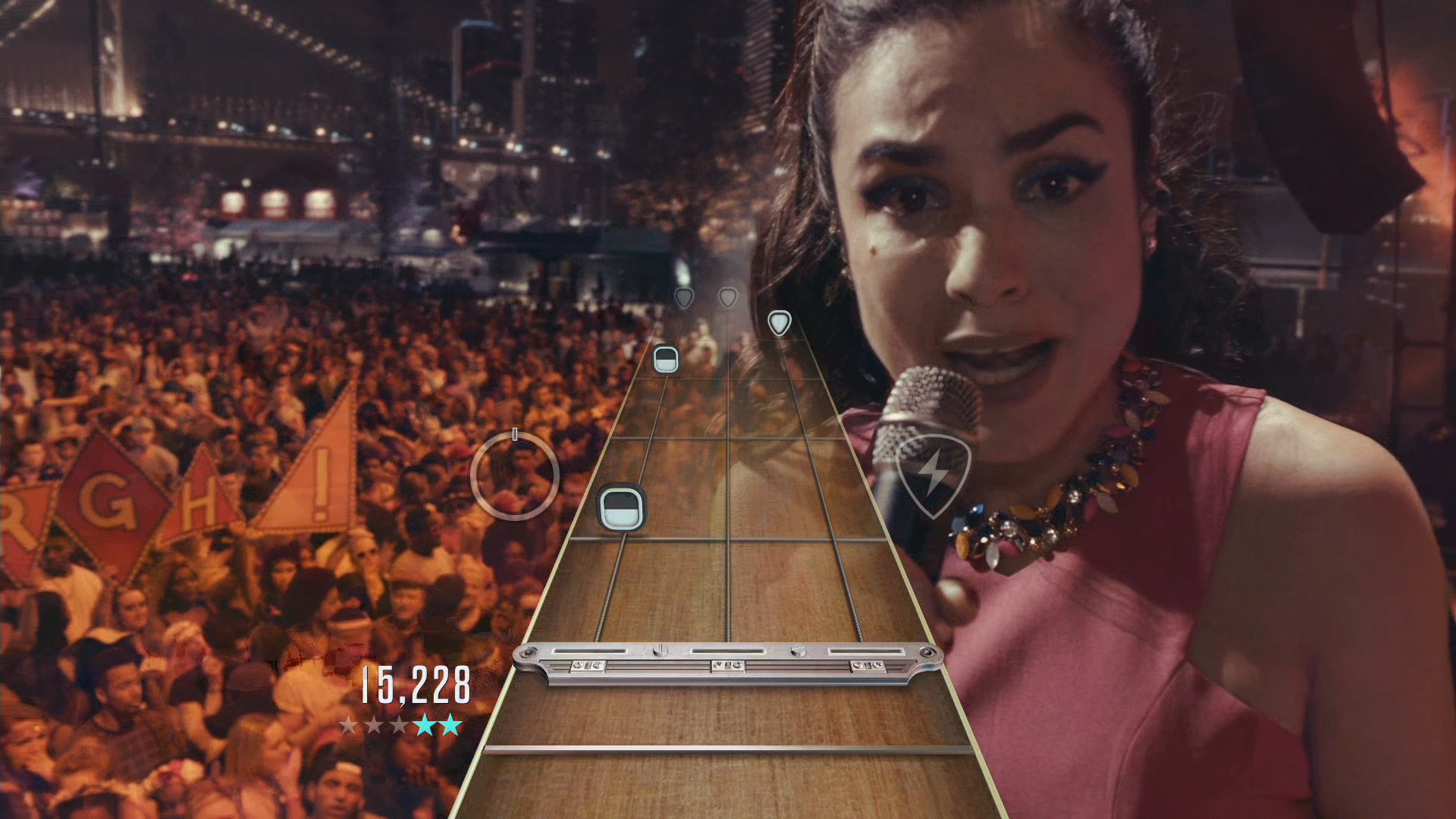 Guitar Hero Live Verdict
Guitar Hero Live Verdict
Despite the somewhat cheesy GH Live mode, the GHTV mode and its progression system offer compelling single-player engagement. Its innovative guitar controller also appeals to rhythm game enthusiasts seeking a fresh gameplay experience.
For players prioritizing social gaming and frequent local multiplayer sessions, Rock Band 4 is the ideal option.
 Rock Band 4 Verdict
Rock Band 4 Verdict
While lacking in single-player depth compared to Guitar Hero Live, Rock Band 4 excels in multiplayer entertainment and allows players to leverage existing DLC libraries from previous entries within the same console family.
Price also factors into the decision. Guitar Hero Live with a guitar controller is generally more affordable than Rock Band 4 with a guitar. However, Rock Band 4 offers a lower entry point for players with legacy instruments.
Ultimately, both Rock Band 4 and Guitar Hero Live are commendable rhythm games. The optimal choice hinges on individual play style, multiplayer preferences, and budget considerations.

